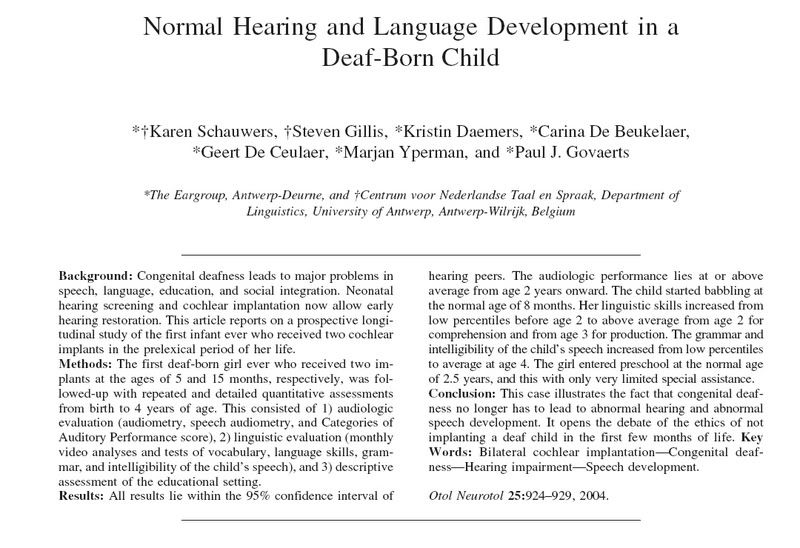Age at implantation and development of vocal and auditory preverbal skills in implanted deaf children
Tait, M.E., Nikolopoulos, T.P. and Lutman, M.E. (2007) Age at implantation and development of vocal and auditory preverbal skills in implanted deaf children. International Journal of Pediatric Otolaryngology, 71, (4), 603-610. (doi:10.1016/j.ijporl.2006.12.010)
e-Prints Soton - Age at implantation and development of vocal and auditory preverbal skills in implanted deaf children
Background
Preverbal vocal and auditory skills are essential precursors of spoken language development and they have been shown previously to predict later speech perception and production outcomes in young implanted deaf children.
Objectives
To assess the effect of age at implantation on the development of vocal and auditory preverbal skills in implanted children.
Methods
The study assessed 99 children, 33 in each of three groups (those implanted between 1 and 2 years; 2 and 3 years; and 3 and 4 years). Preverbal skills were measured in three areas: turn taking, autonomy and auditory awareness of spoken language, using the Tait video analysis method.
Results
The youngest implanted group made an exceptional progress outperforming in all measures the two other groups (p < 0.01), 6 and 12 months post-implantation, whereas there was no such difference before implantation. In the youngest group there was also significantly greater use of an auditory/oral style of communication: 85% of the group by 12 months post-implantation compared with 30% and 18% of the two older groups.
Conclusions
Vocal and auditory preverbal skills develop much more rapidly in children implanted between 1 and 2 years in comparison with older implanted children and reach a significantly higher level by 6 and 12 months post-implantation. In addition, younger implanted children are significantly more likely by 12 months post-implantation to adopt an auditory/oral mode of communication. These findings favour cochlear implantation as early as between 1 and 2 years, provided that correct diagnosis and adequate hearing-aid trial have been achieved.





